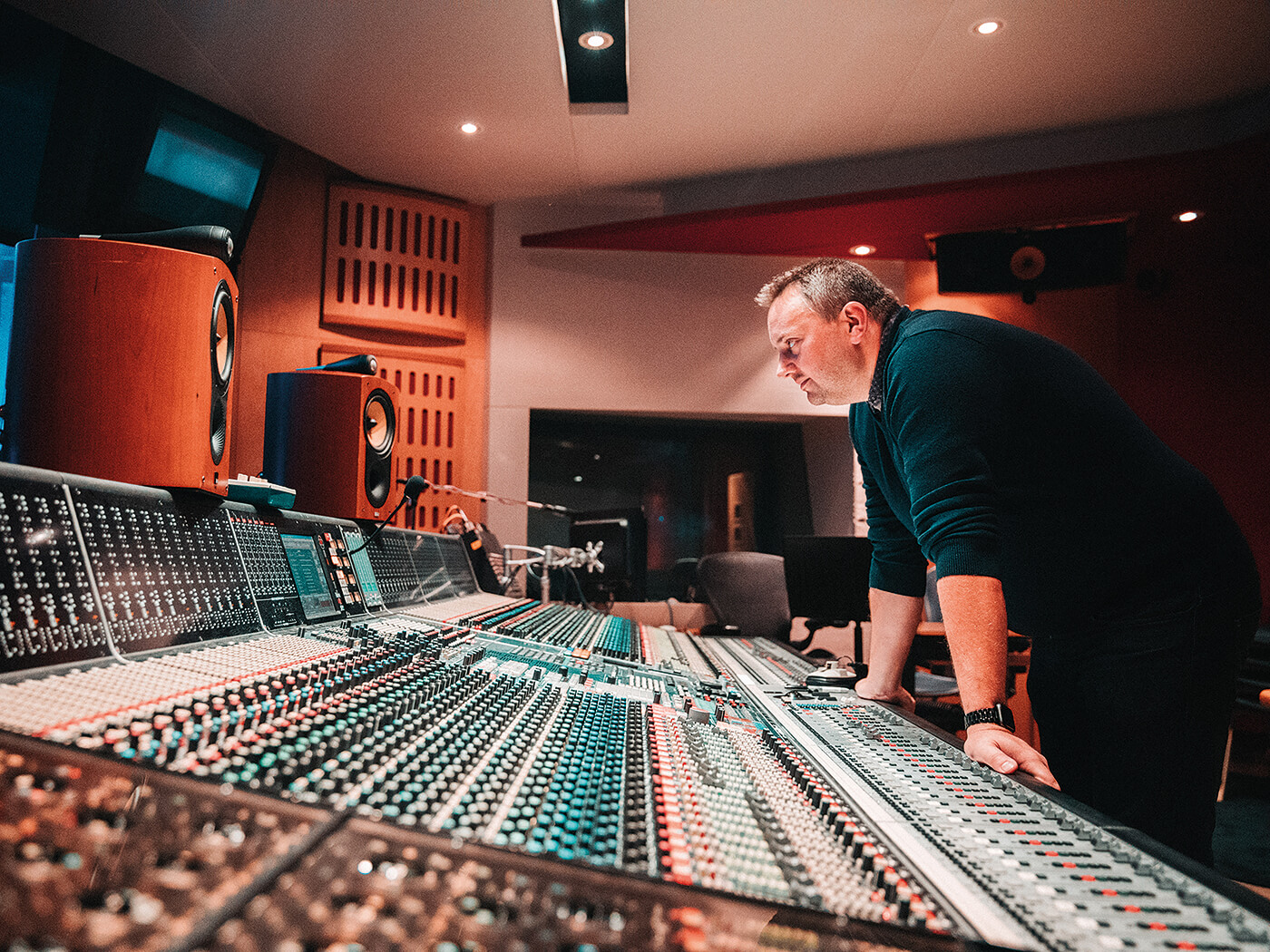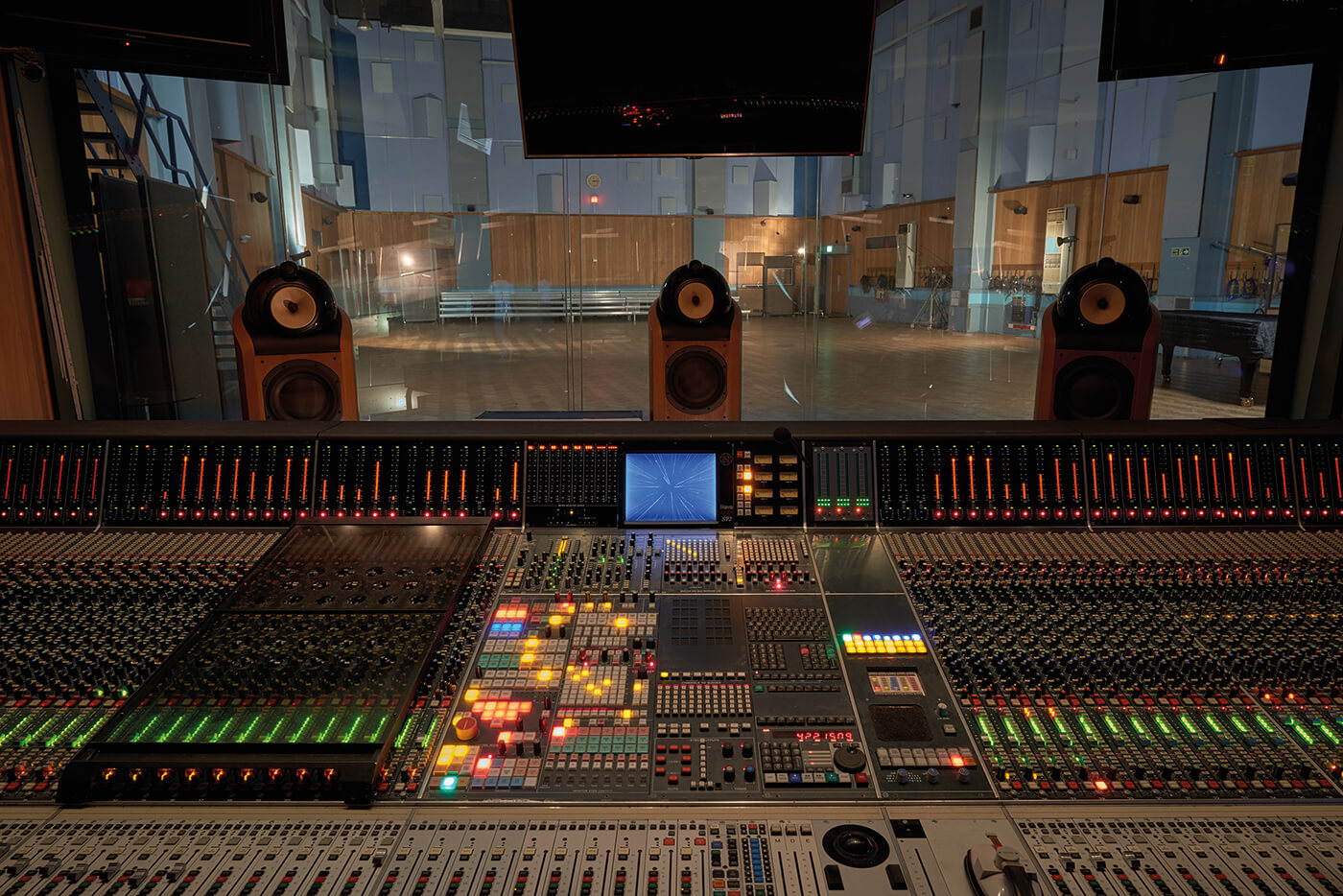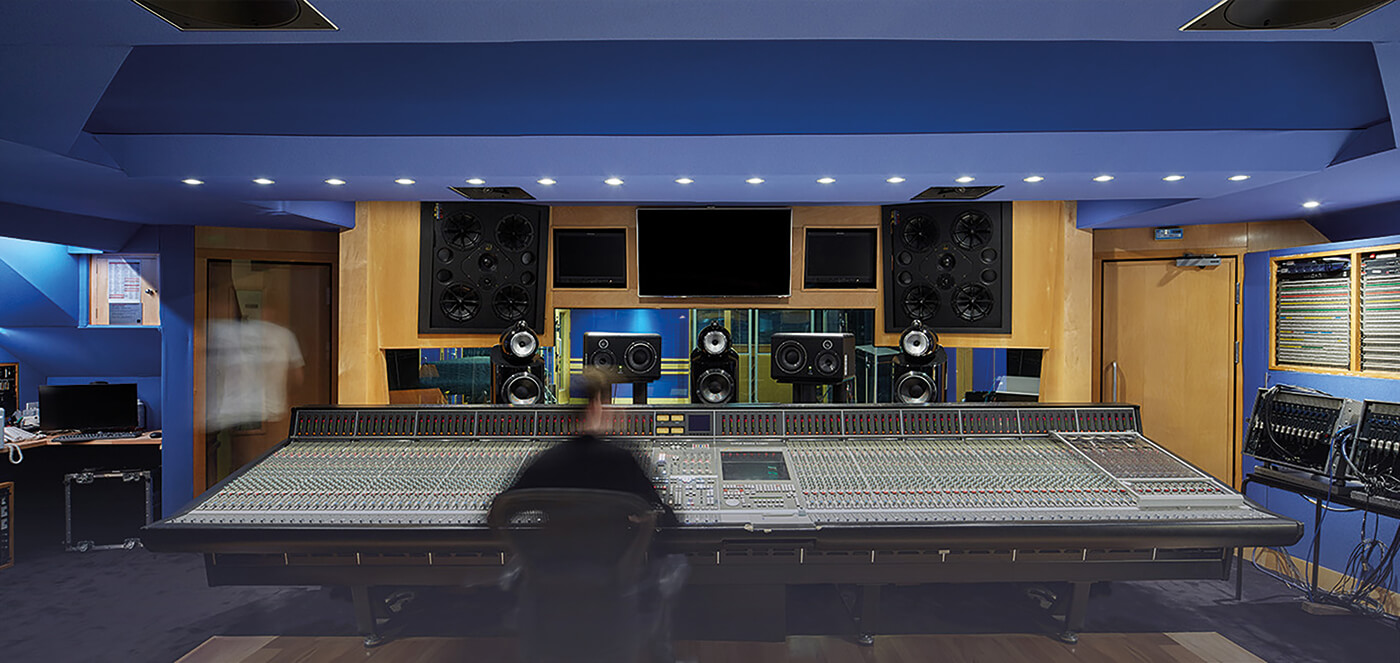Ask Abbey Road: Andrew Dudman on monitoring and learning the craft
In this instalment of our Q&A series with Abbey Road’s in-house engineering talent, senior engineer Andrew Dudman answers your questions on monitoring, basic mastering and how best to improve your studio skills.

In the first part of our Q&A with Andrew Dudman, senior engineer at Abbey Road Studios, we got his take on recording bands, when virtual instruments can be better than the real thing, sharing ambience and more.
This time he answers your questions on education in music technology, dynamics processing and setting up your listening environment.
You can put your own questions to engineer John Barrett (The Shape Of Water, Black Panther) for the next edition of Ask Abbey Road, now.
Rico Fluor asks: could you describe your basic, typical mastering chain? Does it change for different musical styles or genres?
Andrew Dudman: I would say 99.9 per cent of any projects that I’ve ever done have had a dedicated mastering session booked in with a mastering engineer. It’s a super valid part of the recording process, just having someone else make those final decisions about the level it’s going to play. Knowing what the streaming service is and that kind of thing is super important, too.
The last thing you want to do is to send the mastering engineer something that’s already mastered because then they can’t do anything with it.
I tend not to over-compress and I certainly don’t multi-band limit my master mixes. There might be a little bit of buss compression on it, depending on the style of music. If I use more buss compression on all my sub-busses, then there’s going to be less need for it on the master buss, for example.
“The best way to learn is to be immersed in it”
I’ll maybe use a bit of EQ, a bit of master compression, but then I always print two versions of my final mix. The one which I call the ‘flat version’ – that’s what goes to the mastering engineer. And that will have whatever simple processing I used on my master buss chain. Then I’ll do a second version that will have some limiting on it, and I make sure it’s clearly labelled in capitals: ‘LISTENING COPY ONLY. NOT FOR PRODUCTION’. That’s just for reference mixes to send out to people if they’re going to be directly comparing your mix to something that’s been on Spotify and they’re A/Bing between the two. The last thing you want is for yours to be five to 10dB quieter. So, I tend to use as a limiter that’s as transparent as possible. It’s just to bring the level up, not to colour the sound too much. I’d never try and beat the level of something commercially available, especially if it’s going to go through a mastering process.
Sometimes, if I know the mastering engineer, I’ll send them both versions, so they know what level people have been listening to the reference at. Then they’re informed about what other people might then come back and say.
There are times when certain styles of music, genres where you know people are going to be listening on their phone, you have to raise it in level to judge it best. A lot of the stuff I do isn’t loud pop, rock or electronic music. There tend to be more dynamics involved in the music I work on, so I’m not directly always trying to compete with the latest squashed pop mix.

Maliel N asks: what’s the best way to learn and improve your mixing skills?
AD: Listening and practising. The best way to learn is to be immersed in it. The best way is by watching the pros at work and being able to quiz them about it, even if it’s at the pub afterwards.
When I was assisting, I used to make sure I took something away from every session I assisted on. Sometimes, it was what not to do.
The other thing is to get hands-on. So, if you’ve got some material you can work with and a reference that you love the sound of, try and work out how that was created. Try different ways to get the same results, because some methods might be quicker and some might allow more creativity. Start messing around and find your own methods, based on good, solid practice.
“Parallel compression is the obvious way to start on your multi-track level”
Maciek Buszek asks: do you think it’s worth paying £30k+ to get a BA Hons in sound engineering?
AD: I did a four-year degree course [Ed – the famous Tonmeister programme at the University of Surrey], and it’s got me exactly where I wanted to be. Lots of these courses these days offer more contact with professionals – either in masterclasses or as guests lectures – than they ever have done in the past. So, actually, I think you’re going to get more contact with current, working engineers, professionals, producers, now than you ever would have, in these educational establishments.
It’s going to be a different way of learning than being in a studio. There aren’t as many options out there right now, either. If you were sending your CV out to studios 15-20 years ago, there were loads more studios out there to apply to. Now, the best way is to get to know these visiting engineers, producers, musicians who come and lecture on these courses. And if you’re good and you’re asking the right questions, you’ll get noticed. It’s an excellent way to make industry contacts.
That’s what I did. I got on my degree course, and I knew I wanted to do my work experience at Abbey Road in my third year [Ed – the Tonmeister programme offers a placement at the studios]. So I made it the focus of my first two years to get the Abbey Road position. I did that, then that put me at the top of the list of people for them to call back when they had a job going. I was lucky and after I completed my final year of studies, went straight back into employment, all because of the year’s work experience and the honours degree. There’s no way I would have got the Abbey Road position without having done the course. I am wholeheartedly for it. You’ve also got a degree if you want to change your mind further down the line in your studies or work. Having a piece of paper with a degree shows a certain amount of aptitude and commitment that translates into other industries. So, I think it will help.
Juan Pablo Velardi asks: how do you make tracks louder without losing dynamics, especially in electronic music?
AD: This one is a hard one, because it’s not a style I usually work in. I’ve done a couple of film scores with big dance bands, and we had to do the opposite. We’d get them to give us their multi-track and then we mix it in a way that it’s not so compressed and loud and without all the limiting compression. The reason is that, especially in the film world, you need those dynamics to be able to shape the music around the other stuff that’s going on in the film.
For live playback in clubs, it’s a whole different style of mixing. For keeping control of dynamics while also getting louder, parallel compression is the obvious way to start on your multi-track level. This allows you to keep your original signal dynamic as clean as possible while giving it level and life. There are many ways of processing a parallel chain to make it fit. It can be heavily compressed, then you bring that in and it gives weight and body behind the main sound. Or, if you’re after more life and pump, you can use a compressor with a fast attack and release.
After parallel compression, then you’d look into master bus compression and multi-band compressor/limiters to really bring the overall level up. Then at the top end of the chain, a mastering engineer can do a lot of that final level control as well.

Anthony Nottingham asks: how do you decide whether your speakers should sit on their sides or stand upright? If you have them on their sides, how do you know whether to have the tweeters on the inside or outside of your listening position?
AD: Firstly, I’d always say you should read the manual. And, if you can, do what’s recommended. Speaker manufacturers will have designed the speakers, so the waveform disperses from the tweeter in such a way that it interferes in a positive way with all the other drivers. There are definitely manufacturers who say the tweeters should be on the inside when you’re positioning them. And other manufacturers recommend their speakers are vertical rather than turned sideways. Even if it’s a square box, it can comfortably sit on its side.
The manufacturers will have designed the layout of their drivers so the acoustic centre should be at ear height. There are all these little things to consider. If your speaker is on the side, it might be a lot closer to the surface of your desk. It’s all about how the speakers are designed to be used. Then, once you’ve got your ideal workspace set up, you have to consider whether what’s recommended is actually possible. If you need to have your speakers really wide, then I would think about maybe having the tweeters on the inside, if possible, so your image isn’t crazy wide. Likewise, if your speakers are positioned really close to one another, it might be a good idea to try tweeters on the outside, so you get a bit more of a stereo spread.
You want to try and avoid having the tweeters right next to each other. That’s because you get all the positional information from the high end.
Have a burning question about recording? Ask yours before 11 July and have it answered by Abbey Road engineer John Barrett.